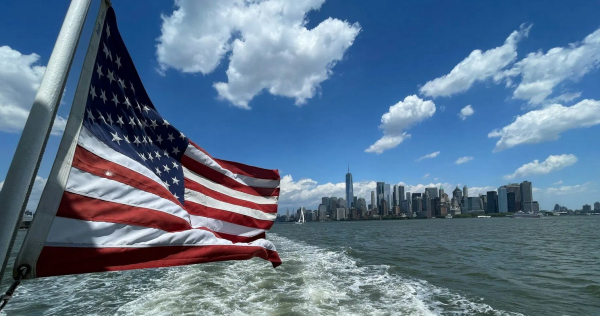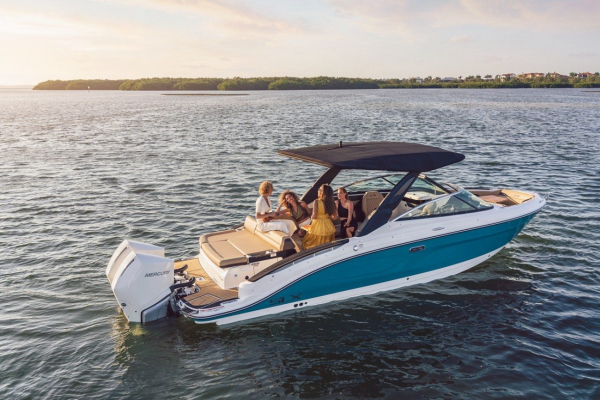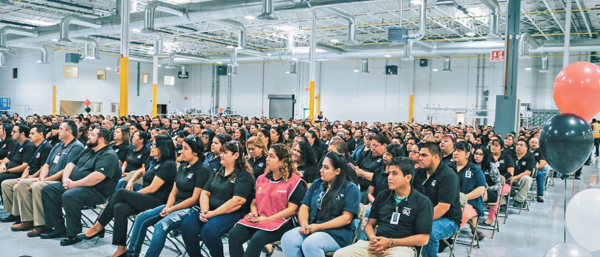
The latest announcement of success in Donald Trump’s high stakes poker came yesterday, as Canada joined Mexico in agreeing to much stronger border protection in return for a hold on announced 25 percent tariffs on goods supplied to the U.S.
The move likely brought a massive sigh of relief in executive offices across the boating industry, which would have been one of many U.S. sectors heavily impacted if the tariffs had been put in place.
U. S. boat and motor sales have struggled the past few years, mostly the result of the great leveling after the covid years, when we all had time off and government money to spend. We apparently spent a lot of it on boats.
Had the 25% tariffs remained, what has been a leveling in the boating biz seemed likely to become a downhill ski run.
Over half the U.S. made boats sold outside the U.S. go to Canadian buyers, not surprisingly.
And many boat builders in recent years have moved their fiberglass production to Mexico. The reason, most say, is that they can’t get enough good quality U.S. workers willing to deal with the hot, dirty, vaporous jobs of producing boat hulls at a reasonable cost.
Reportedly, workers in Mexico, operating in new plants constructed and run to U.S. standards, are happy to have the jobs and are producing very good hulls, which are then transported to the U.S. for finish work.
Brunswick, parent company of Mercury and numerous boating brands, has a 385,000-square-foot operation in Reynosa, Mexico for its Bayliner, Trophy, Heyday, Sea Ray, and Lund brands. The company also has a facility in Juarez, Mexico, with more than 700 employees producing wire harnesses, control boxes and electrical parts.

Yellowfin Yachts and Invincible Boats just christened a composites and lamination facility in Mérida, Mexico, specifically citing the poor quality of hourly workers available for boat building in the U.S. as a reason. And several well-known fishing lure companies have their lures made in Mexico.
Mercury’s 40-60 hp outboards are assembled in China, reportedly with mostly U.S.A.-made parts. It remains to be seen whether the President’s hardball tactics will work there, but at this point very few are betting against Donald Trump. China yesterday announced a “limited” response, which probably means they, too, are willing to deal with the ultimate deal-maker.
National Marine Manufacturers Association president and CEO Frank Hugelmeyer was among the voices calling for a more measured approach prior to this week’s agreements with Canada and Mexico, cautioning that retaliatory tariffs could harm the very businesses they sought to protect.
“Recreational boating supports 812,000 American jobs and 36,000 businesses across the U.S. To remain a strong job creator at home and a competitive force globally, our industry needs a balanced and stable approach to tariffs,” Hugelmeyer said.

Clearly, a lot of industries which seemed on the precipice earlier this week are breathing a sigh of relief today.
As in all capitalist countries, the folks who take the risks for a shot at big money have to make hard decisions to keep their companies profitable. No profit not only means they don’t get rich, it means the company goes out of business and everybody who works there is out of a job.
The same general concept applies to why in many cases we can’t simply “tax the rich” to solve all our problems—in the U.S. system, “the rich” can be any of us with the smarts and determination to succeed, and they employ the rest of us.
This President seems to have a clear vision of making the American system work, even if he sometimes walks a risky tightrope to get us there.
— Frank Sargeant
Frankmako1@gmail.com